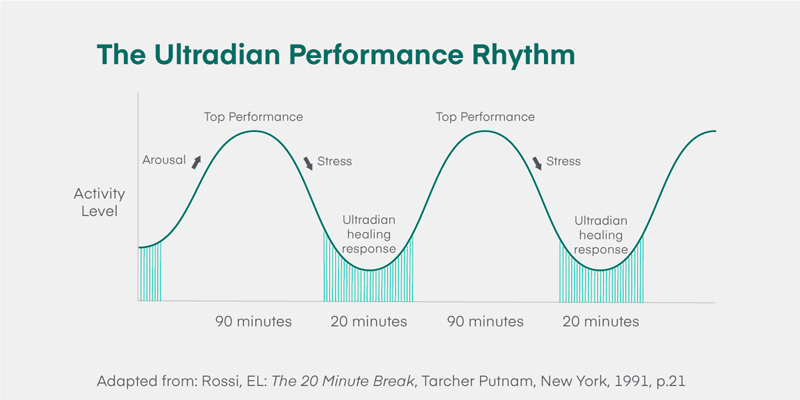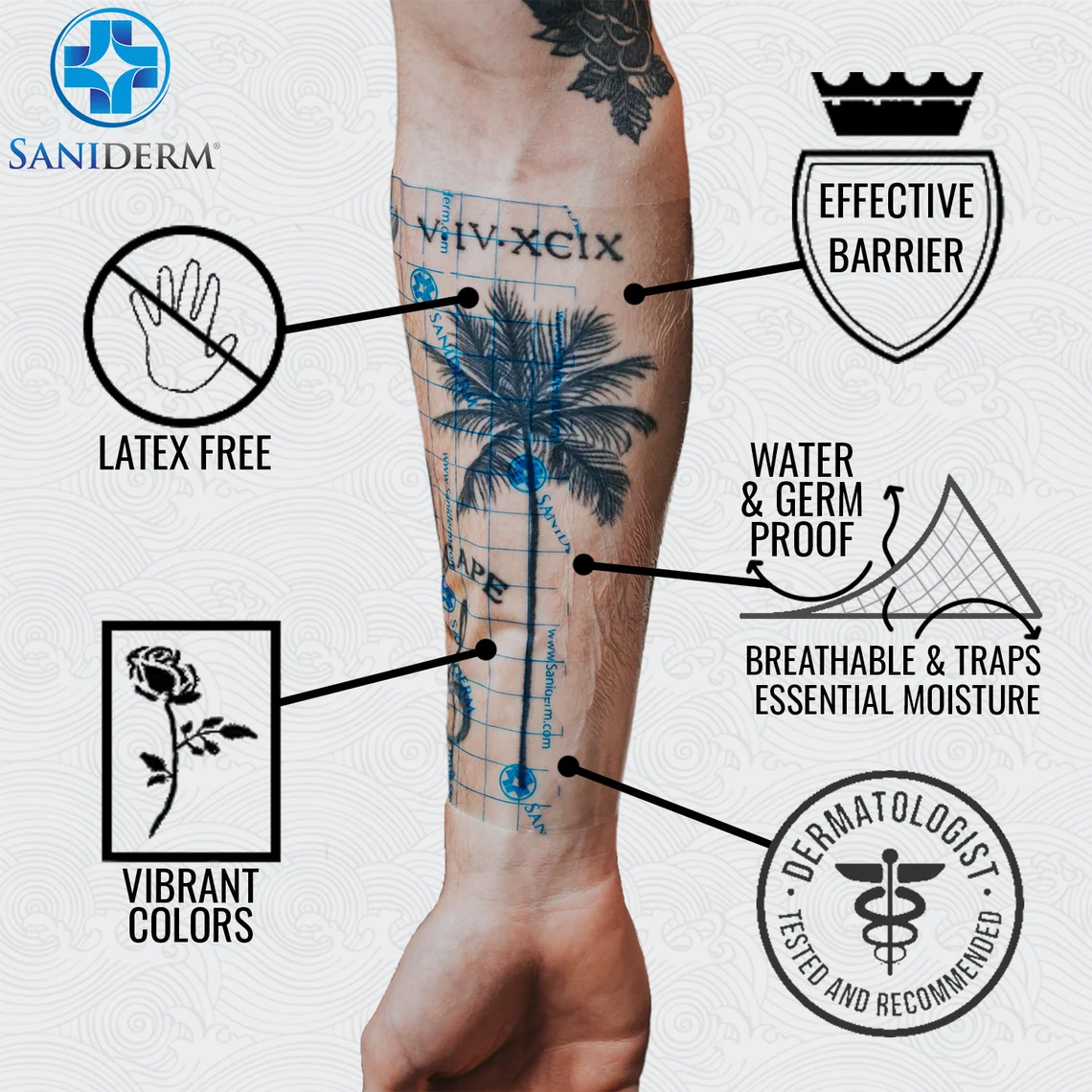Tattoo Peeling Science Revealed: Why Your Skin Sheds and How to Master the Process
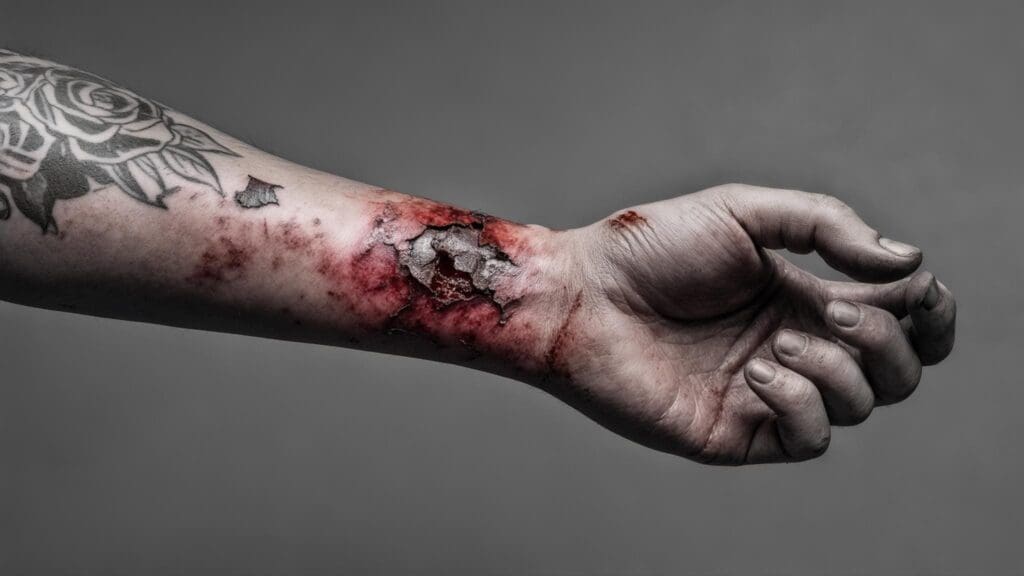

Source: squarespace-cdn.com
Getting a fresh tattoo starts an incredible biological journey that millions of people experience worldwide. Your skin begins a fascinating process of renewal and repair that determines whether you’ll end up with a vibrant, lasting piece of art or something that heals poorly. Understanding why tattoo peeling happens isn’t just interesting science—it’s essential knowledge that can make or break your healing experience.
Normal peeling usually starts within a week after getting your tattoo and might last about a week or so according to HUSH Anesthetic, making this 7-14 day window absolutely critical for proper aftercare decisions. I’ve seen too many people panic when their tattoo peeling normal process begins, not realizing they’re witnessing their body’s natural healing masterpiece in action.
Table of Contents
- The Biological Architecture of Tattoo Peeling
- Peeling Pattern Recognition and Intervention Strategies
- The Psychological and Social Dimensions of Peeling
- Advanced Peeling Optimization for Future Tattoos
- Timing Dynamics and Peeling Prediction Models
TL;DR
Tattoo peeling involves complex cellular processes with keratinocyte migration, inflammatory responses, and accelerated skin renewal that typically lasts 7-14 days. You can identify abnormal peeling patterns and implement strategic management protocols to optimize healing outcomes.
The psychological urge to pick at peeling skin stems from deep-rooted compulsive behaviors that require specific coping strategies to prevent tattoo damage. Your personal peeling profile gets influenced by genetics, lifestyle factors, and circadian rhythms, allowing you to customize aftercare for future tattoos.
Environmental controls through humidity management and nutritional optimization can significantly reduce peeling duration and improve final tattoo quality. The tattoo peeling process becomes much more manageable when you understand the science behind what’s happening to your skin.
The Biological Architecture of Tattoo Peeling
Your tattoo peeling process involves intricate cellular mechanisms occurring beneath your skin’s surface. Understanding these biological processes explains why peeling isn’t just normal—it’s essential for proper tattoo healing and long-term ink retention. The complex interplay between tissue repair, immune responses, and cellular regeneration creates the characteristic shedding that begins 3-5 days after getting tattooed.
Tattoo needles penetrate multiple skin layers simultaneously, creating a unique healing environment where your body must repair tissue damage while permanently housing foreign ink particles. Your immune system’s inflammatory response directly controls peeling intensity through prostaglandins and cytokines, explaining individual variations in healing experiences.
Understanding the biological aspects of tattoo peeling becomes even more crucial when considering pain management during the healing process, as proper aftercare can significantly reduce discomfort throughout the peeling phase.
Source: amazonaws.com
Dermal Layer Dynamics During Ink Integration
The tattoo needle creates a complex healing environment where your skin must simultaneously repair tissue damage and accommodate permanent ink particles. This dual process affects how your dermal layers respond during the critical first weeks of healing, influencing both peeling patterns and final tattoo appearance.
Keratinocytes follow predictable migration patterns during healing, pushing damaged surface layers upward while new cells form beneath. Macrophages engulf ink particles and create micro-environments that affect surrounding tissue regeneration. The inflammatory cascade regulates how aggressively your body sheds damaged tissue, determining your individual peeling intensity.
When your tattoo is peeling, you’re witnessing this carefully orchestrated cellular dance. Normal tattoo peeling follows these biological rules, which is why understanding the process helps you distinguish between healthy healing and potential problems.
| Skin Layer | Needle Penetration Depth | Healing Timeline | Primary Function in Tattoo Process |
|---|---|---|---|
| Epidermis | 0.5-1mm | 3-7 days | Surface protection, peeling initiation |
| Papillary Dermis | 1-2mm | 7-14 days | Ink particle housing, primary healing |
| Reticular Dermis | 2-4mm | 14-28 days | Long-term ink stabilization |
| Subcutaneous | 4mm+ | Avoided | Risk zone for complications |
Keratinocyte Migration Patterns
Keratinocytes are your skin’s primary building blocks that follow specific migration patterns during tattoo healing. These cells systematically push damaged surface layers upward while generating new tissue beneath, creating the characteristic peeling effect that typically starts 3-5 days after getting your tattoo.
Keratinocytes migrate in organized waves from the basal layer to the surface, following chemical signals released by damaged tissue. The migration speed increases 2-3 times normal rates after tattooing, explaining why peeling occurs much faster than your skin’s typical 28-day renewal cycle.
Disruptions in migration patterns can cause uneven peeling or delayed healing, often resulting from improper aftercare or environmental factors. Peeling is not a sign that your tattoo artist did anything wrong, it does not mean your tattoo will disappear, and it is not worth worrying about according to HUSH Anesthetic, emphasizing that this cellular migration is a natural and necessary part of the healing process.
When my tattoo peeling begins, I know these keratinocytes are doing exactly what they’re supposed to do. Your tattoo is peeling because millions of these cells are working together to reveal the healed artwork underneath.
Source: researchgate.net
Inflammatory Response Cascades
Your immune system’s inflammatory response directly influences how intensely your tattoo will peel. Prostaglandins and cytokines regulate the aggressiveness of tissue shedding, which explains why some people experience heavy peeling while others barely notice the process.
Prostaglandins control blood vessel dilation and cellular permeability, affecting how much fluid accumulates in healing tissue. Cytokines coordinate the immune response intensity, determining whether you’ll experience mild flaking or dramatic skin shedding. Individual inflammatory responses vary based on genetics, overall health, and previous tattoo experiences, creating personalized peeling patterns.
Why is my tattoo peeling so much more than my friend’s? The answer lies in these inflammatory mediators. Tattoo peeling intensity depends on your unique immune system response, which can vary dramatically between individuals even with identical tattoos and aftercare routines.
Consider two people getting identical tattoos on the same day. Person A experiences light flaking that barely requires attention, while Person B develops thick, obvious peeling that lasts two weeks. This difference stems from their individual inflammatory response patterns—Person A’s immune system produces moderate cytokine levels that promote gentle healing, while Person B’s system generates higher inflammatory mediator concentrations, creating more aggressive tissue shedding. Neither response is wrong; they’re simply different biological approaches to the same healing challenge.
Ink Particle Stabilization Process
As macrophages engulf ink particles, they create specialized micro-environments that affect surrounding tissue regeneration. This stabilization process influences both how long your peeling lasts and the final clarity of your healed tattoo.
Macrophages form protective barriers around ink particles, creating localized areas of altered cellular activity. The stabilization process can take 2-4 weeks to complete, during which surrounding tissue continues regenerating at modified rates.
Successful ink particle stabilization depends on proper aftercare and avoiding disruptions during the critical first 10 days of healing. Does tattoo peel affect ink retention? Absolutely—but when the process happens naturally, it actually helps lock in your ink for the long term.
The Epidermal Renewal Cycle Disruption
Tattooing fundamentally alters your skin’s normal 28-day renewal cycle, creating a unique healing timeline that affects when and how peeling occurs. This disruption accelerates cellular production and changes the typical shedding patterns you’d normally experience.
Post-tattoo skin produces new cells at 2-3 times the normal rate, compressing weeks of renewal into days. The accelerated cycle explains why peeling typically lasts 7-14 days rather than following your skin’s natural monthly timeline. Understanding this disruption helps you anticipate healing phases and adjust aftercare accordingly.
Tattoo peeling happens on this compressed timeline, which is why how long does tattoo peeling last becomes such a common question. Your skin is essentially fast-forwarding through its normal renewal process.
Source: medifine.co.uk
Accelerated Cell Turnover Mechanisms
Post-tattoo skin produces new cells at 2-3 times the normal rate due to growth factor activation and increased metabolic activity. This acceleration explains why peeling typically lasts 7-14 days rather than following your skin’s natural monthly cycle.
Growth factors released during the tattooing process trigger rapid cellular division in the basal layer. Increased metabolic activity requires additional nutrients and oxygen, making proper nutrition crucial during healing. The accelerated turnover gradually returns to normal rates over 4-6 weeks, with peeling intensity decreasing accordingly.
Your tattoo is peeling because this accelerated process pushes damaged surface cells up and out much faster than usual. I’ve noticed that people who support this increased metabolic demand with proper nutrition tend to have smoother, more predictable peeling patterns.
Moisture Gradient Theory in Healing
The relationship between internal hydration and external moisture creates gradients that directly impact your peeling patterns and healing quality. Understanding these moisture dynamics allows you to optimize your aftercare approach for better results.
Tattooed skin loses moisture 40% faster than normal skin during the first week due to barrier function disruption. Different aftercare approaches create distinct moisture environments that dramatically alter peeling characteristics.
Proper moisture balance prevents both excessive drying (which causes premature peeling) and over-hydration (which delays natural shedding). Tattoos are created by penetrating needles into the upper and middle layers of skin (i.e., the epidermis and dermis). As the skin heals, part of the process includes exfoliation, or the dead skin cells sloughing off to make way for new skin cells according to Saniderm, highlighting how this moisture disruption is an integral part of the cellular renewal process.
Knowing what to do if your tattoo is peeling starts with understanding these moisture dynamics. Too much or too little moisture can throw off the entire healing timeline.
Transepidermal Water Loss Dynamics
Tattooed skin loses moisture 40% faster than normal skin during the first week of healing. Understanding this accelerated water loss helps explain why proper hydration becomes crucial for optimal peeling and overall healing success.
The tattooing process disrupts the skin’s natural barrier function, creating microscopic pathways for increased water loss. Peak water loss occurs during days 2-5, coinciding with the most critical healing phase. Monitoring and managing water loss through strategic moisturizing can significantly improve healing outcomes and reduce complications.
Your tattoo may continue to slough off skin for up to four weeks according to Saniderm, extending the timeline beyond the typical 7-14 day window for some individuals. This extended timeline often correlates with how well you manage moisture loss during those critical first days.
Tattoo peeling off becomes more manageable when you understand that your skin is literally losing water faster than normal. I recommend tracking your moisturizing routine during the first week to establish patterns that work for your specific healing response.
Occlusive vs. Semi-Permeable Healing Environments
Different aftercare approaches create distinct moisture environments that dramatically alter your peeling characteristics. Occlusive healing reduces peeling intensity but may extend duration, while semi-permeable methods promote more natural shedding patterns.
Occlusive environments maintain high moisture levels but can slow natural cellular turnover. Semi-permeable barriers allow controlled moisture exchange while protecting against external contaminants. The choice between approaches should consider your skin type, tattoo location, and lifestyle factors during the healing period.
My tattoo is peeling differently than expected? Your aftercare approach might be creating a moisture environment that doesn’t match your skin’s natural preferences. Some people thrive with occlusive healing, while others need more breathable approaches.
Source: echotape.com
Peeling Pattern Recognition and Intervention Strategies
Peeling doesn’t follow identical patterns for everyone. Learning to read your skin’s specific peeling signature enables targeted interventions that optimize healing outcomes. Recognizing when peeling deviates from normal patterns can prevent complications and ensure your tattoo heals with maximum quality and minimal issues.
Abnormal peeling patterns serve as early warning signs for potential complications, allowing for immediate corrective action. Strategic management protocols can guide the peeling process rather than leaving it entirely to chance.
Tattoo peeling varies so much between individuals that learning to recognize your patterns becomes invaluable for future tattoos. Is tattoo peeling normal when it looks different from what you expected? Often yes, but knowing the difference between normal variation and actual problems can save your tattoo.
When considering different body placements, it’s important to understand that certain areas experience more intense peeling due to varying skin thickness and nerve density, which directly impacts healing patterns.
Abnormal Peeling Pattern Identification
Recognizing when peeling deviates from expected patterns helps distinguish between normal healing and potential problems. Early identification of abnormal patterns allows you to adjust your aftercare approach before complications develop.
Premature peeling (within 24-48 hours) often indicates over-aggressive aftercare or environmental stress factors. Delayed peeling (no signs by day 7) may signal compromised circulation, over-moisturizing, or underlying health issues.
Sectional peeling asymmetry reveals information about needle depth consistency, skin thickness variations, or localized healing factors. What to do when your tattoo is peeling abnormally depends on identifying which pattern you’re experiencing. Your tattoo is peeling in a way that tells a story about what’s happening beneath the surface.
| Peeling Pattern | Timeline | Potential Causes | Recommended Actions |
|---|---|---|---|
| Premature | 24-48 hours | Over-washing, harsh products, environmental stress | Reduce cleaning frequency, switch to gentler products |
| Normal | 3-7 days | Standard healing process | Continue current aftercare routine |
| Delayed | No signs by day 7 | Over-moisturizing, poor circulation, health factors | Reduce moisturizer application, consult professional |
| Asymmetrical | Varies by section | Needle depth inconsistency, uneven aftercare | Focus care on slower-healing areas |
| Excessive | Heavy throughout | Infection, allergic reaction, improper care | Seek medical evaluation immediately |
Premature Peeling Indicators
Peeling that begins within 24-48 hours often indicates over-aggressive aftercare or environmental factors affecting your healing process. This premature shedding requires immediate adjustment to prevent ink loss and potential scarring.
Excessive washing, harsh soaps, or aggressive drying can trigger premature cellular shedding before proper healing begins. Environmental stressors such as extreme temperatures, low humidity, or direct sunlight can accelerate surface damage.
Immediate intervention involves reducing cleaning frequency, switching to gentler products, and creating protective barriers. When your new tattoo is peeling this early, your skin is essentially crying for help. I’ve seen people lose significant ink density because they didn’t recognize and address premature peeling quickly enough.
Source: post.rvohealth.io
Delayed Peeling Syndrome
When peeling doesn’t begin by day 7, it may indicate compromised circulation, over-moisturizing, or underlying health factors affecting cellular turnover rates. This delay requires careful assessment and modified aftercare approaches.
Over-moisturizing can create an environment where dead skin cells remain adhered longer than necessary. Poor circulation reduces the delivery of nutrients and removal of cellular waste, slowing natural shedding processes. Certain medications, health conditions, or age-related factors can significantly slow cellular turnover rates.
What to do when your tattoo starts peeling late involves first identifying the underlying cause. Are you applying too much moisturizer? Has your circulation been compromised by positioning or clothing? Sometimes the solution is as simple as backing off the heavy aftercare routine.
Sectional Peeling Asymmetry
When different areas of the same tattoo peel at dramatically different rates, it reveals important information about needle depth consistency, skin thickness variations, or localized healing factors that need attention.
Inconsistent needle depth creates varying levels of tissue damage, resulting in uneven healing timelines across the tattoo. Natural skin thickness variations (especially over joints or muscle groups) create different healing environments within the same piece. Localized factors such as clothing friction, sleeping position, or uneven aftercare application can cause asymmetrical healing patterns.
Tattoos all FLAKE when they are new and healing, usually around 4-5 days after your tattoo session according to DermDude, providing specific timing benchmarks for when asymmetrical patterns typically emerge. What to do when my tattoo is peeling unevenly requires focusing extra attention on the slower-healing areas while maintaining standard care for normally progressing sections.
A large shoulder tattoo might show normal peeling across the flat deltoid muscle but delayed peeling where the design wraps around the joint capsule. This asymmetry occurs because the skin over the joint is naturally thicker and has different vascular supply patterns. The solution involves applying slightly more frequent moisturizing to the slower-healing areas while maintaining standard care for the normally progressing sections.
Strategic Peeling Management Protocols
Rather than passively waiting for peeling to occur naturally, you can implement specific strategies to guide the process for optimal results. These protocols help ensure even healing while maintaining ink integrity throughout the shedding phase.
Controlled exfoliation techniques during peak peeling (days 5-8) can prevent excessive buildup while preserving ink quality. Environmental optimization through humidity, temperature, and air circulation control significantly influences peeling quality.
Timing interventions correctly maximizes benefits while minimizing risks to your healing tattoo. Can you rub a peeling tattoo safely? The answer depends on timing and technique. When your tattoo is peeling naturally, gentle assistance can actually improve outcomes when done correctly.
Controlled Exfoliation Techniques
Gentle mechanical assistance during peak peeling (days 5-8) can prevent excessive buildup while maintaining ink integrity. This involves specific pressure and timing protocols that work with your body’s natural healing process.
Light circular motions with lukewarm water help remove loose skin without forcing adherent tissue. Proper timing ensures you’re only assisting natural shedding rather than prematurely removing protective layers.
Immediate moisturizing after any assistance prevents excessive drying and maintains optimal healing conditions. When a tattoo starts peeling naturally, you can safely help the process along with these steps:
- Wait until natural peeling begins (day 4-5 minimum)
- Use lukewarm water and gentle circular motions
- Apply light pressure only to loose, lifting skin
- Never force removal of adherent flakes
- Immediately moisturize after any assistance
Source: shopify.com
Environmental Peeling Optimization
Controlling humidity, temperature, and air circulation around your healing tattoo can significantly influence peeling quality and duration. Strategic environmental management creates ideal conditions for smooth, even shedding.
Maintaining 45-55% relative humidity prevents both excessive drying and moisture retention that can complicate healing. Temperature stability between 68-72°F supports consistent cellular activity and blood flow to the healing area. Gentle air circulation without direct drafts helps maintain optimal moisture levels while preventing bacterial growth.
Your tattoo is peeling in response to environmental conditions just as much as internal healing processes. I’ve found that people who control their healing environment see more predictable, manageable peeling patterns.
Environmental Control Protocol:
- Maintain 45-55% relative humidity in your primary environment
- Avoid temperature extremes (keep between 68-72°F)
- Ensure gentle air circulation without direct drafts
- Shield from UV exposure completely during peeling phase
Source: saniderm.com
The Psychological and Social Dimensions of Peeling
Tattoo peeling creates unique psychological challenges and social situations that significantly impact your healing experience. The visual and tactile aspects of peeling skin trigger deep psychological responses that can sabotage healing if not properly understood and managed through specific coping strategies.
The combination of visual stimulation and tactile sensation creates perfect conditions for compulsive behaviors that can damage healing tattoos. Social situations during peeling require strategic management to minimize discomfort and unwanted attention.
Recent celebrity experiences highlight these psychological challenges. Katie Price has revealed her eyebrows are ‘flaking off’ after undergoing laser to remove them according to Daily Mail, demonstrating how even experienced individuals with extensive body modification history still find the peeling process noteworthy enough to document and share publicly.
Tattoo peeling affects your mind as much as your skin. When your new tattoo is peeling, the psychological urges can be harder to manage than the physical process itself.
Source: skinpick.com
Peeling Anxiety and Control Mechanisms
The urge to pick, scratch, or control the peeling process stems from deep psychological drives that can sabotage healing if not properly understood and managed. These compulsive behaviors require specific intervention strategies to protect your investment.
Visual stimulation from seeing loose skin combined with tactile sensations creates irresistible urges for many people. High-risk periods (typically evening relaxation times) require proactive management strategies.
Successful intervention involves identifying triggers, keeping hands occupied, and implementing reward systems for positive behaviors. Your tattoo is peeling, and your brain wants to “help” the process along—but this help usually causes more harm than good.
Managing peeling anxiety becomes particularly challenging with larger tattoo designs where the extended healing surface area creates more opportunities for compulsive behaviors to develop.
Compulsive Picking Psychology
The combination of visual stimulation (seeing loose skin) and tactile sensation creates perfect storm conditions for compulsive behaviors. Understanding these psychological triggers helps you develop effective coping strategies to protect your healing tattoo.
The brain’s reward system responds to the satisfaction of removing visible imperfections, creating addictive picking cycles. Stress, boredom, and anxiety amplify compulsive urges, making emotional state management crucial during healing.
Breaking the visual-tactile-reward cycle requires conscious intervention and alternative satisfaction sources. Tattoo peeling triggers the same neural pathways that drive other compulsive behaviors, which is why willpower alone often isn’t enough to resist the urges.
Anti-Picking Strategy Implementation:
- Identify your high-risk times (usually evening relaxation periods)
- Keep hands occupied with fidget tools or stress balls
- Cover the tattoo during vulnerable moments
- Practice mindfulness techniques when urges arise
- Reward yourself for successful non-picking periods
Source: therapyshoppe.com
Social Camouflage Techniques
Peeling tattoos can create social discomfort or unwanted attention in professional and personal settings. Strategic clothing choices and positioning can minimize social friction during the healing process while maintaining your comfort level.
Loose-fitting, breathable fabrics provide coverage without interfering with healing or drawing attention to peeling areas. Strategic positioning during social interactions can minimize visibility of obvious peeling without appearing awkward.
Preparation of brief, confident explanations for curious observers helps maintain social comfort. When your tattoo is peeling visibly, having a simple response ready prevents awkward conversations and reduces your stress about social situations.
The Peeling Documentation Phenomenon
Many people feel compelled to photograph or document their peeling process, which can create both positive and negative psychological effects. Understanding when documentation helps versus harms allows you to use this tool effectively.
Systematic documentation helps identify patterns and provides valuable information for future tattoos or potential complications. Excessive focus on day-to-day changes can increase anxiety and lead to over-intervention in the natural healing process.
Establishing healthy documentation boundaries prevents obsessive monitoring while maintaining useful progress tracking. Tattoo peeling becomes easier to manage when you document strategically rather than obsessively.
Progress Tracking Benefits
Systematic documentation helps identify patterns, track healing progress, and provides valuable information for future tattoos or potential complications. Strategic photo documentation becomes a useful tool for optimizing your healing experience.
Daily photos at consistent times and lighting conditions reveal subtle changes that might otherwise go unnoticed. Pattern recognition from documented healing helps predict and prepare for future tattoo experiences.
Visual evidence of normal progression can reduce anxiety and provide reassurance during concerning moments. When your tattoo is peeling according to normal patterns, having photographic evidence helps distinguish between normal variation and actual problems.
Obsessive Monitoring Risks
Excessive focus on day-to-day changes can increase anxiety and lead to over-intervention in natural healing processes. Establishing healthy documentation boundaries prevents obsessive behaviors while maintaining useful progress tracking.
Hourly or multiple daily inspections can create false impressions of problems where none exist. Magnified focus on minor variations can trigger unnecessary anxiety and compulsive intervention behaviors.
Setting specific documentation schedules (once daily maximum) helps maintain perspective while gathering useful information. Tattoo peeling becomes more stressful when you’re constantly analyzing every tiny change instead of trusting the natural process.
Advanced Peeling Optimization for Future Tattoos
Your first peeling experience provides valuable data for optimizing future tattoo healing outcomes. This knowledge compounds with each subsequent tattoo, allowing you to develop increasingly refined healing protocols based on your personal response patterns and lifestyle factors.
Personal peeling profiles based on genetics, lifestyle, and skin characteristics enable customized aftercare approaches. Multi-tattoo healing scenarios require specialized management due to competing demands on your body’s healing resources.
The growing tattoo community continues to share knowledge about optimization strategies. About 55 shops and some solo artists hand-selected by organizer and local tattooer Daat Kraus tattooed some of the 2,500 attendees during the three-day event according to Press Democrat, showing how conventions serve as knowledge-sharing hubs where experienced collectors learn advanced healing techniques from multiple artists and fellow enthusiasts.
Tattoo peeling becomes more predictable and manageable with each experience. Tattoo peeling normal patterns become clearer as you build your personal healing database.
As you develop your personal peeling profile, consider how different tattoo styles may require adjusted aftercare approaches, since fine line work and solid color fills can heal at different rates.
Source: vlogigurl.com
Personal Peeling Profile Development
Each person has a unique peeling signature based on genetics, lifestyle, and skin characteristics. Identifying your personal profile allows for customized aftercare approaches that work specifically with your body’s healing tendencies.
Genetic factors including family healing patterns, ethnic background, and medical history create predictable frameworks for healing responses. Lifestyle factors such as diet, exercise, stress levels, and sleep patterns all influence peeling characteristics in measurable ways.
Systematic tracking of your healing patterns across multiple tattoos reveals optimization opportunities for future experiences. Your tattoo is peeling in ways that are uniquely yours, and understanding these patterns gives you a significant advantage for future healing success.
Genetic Peeling Predictors
Your family’s healing patterns, ethnic background, and personal medical history create a predictable framework for how you’ll respond to tattoo healing. Understanding these genetic influences helps set realistic expectations and optimize aftercare approaches.
Family history of keloid formation, slow healing, or excessive scarring provides important predictive information. Ethnic background influences skin thickness, melanin content, and typical inflammatory responses that affect peeling patterns.
Personal medical history including autoimmune conditions, circulation issues, or medication use significantly impacts healing timelines. My tattoo is peeling in ways that reflect my genetic blueprint, and recognizing these patterns helps me prepare for future tattoos more effectively.
Lifestyle Factor Integration
Diet, exercise, stress levels, and sleep patterns all influence peeling characteristics in measurable ways. Optimizing these factors before your next tattoo can dramatically improve healing outcomes and reduce complications.
Protein intake directly affects cellular repair rates, with increased needs during active healing phases. Regular exercise improves circulation and immune function, but timing around tattoo sessions requires careful consideration.
Sleep quality and stress management significantly impact growth hormone release and inflammatory responses during healing. Your tattoo is peeling in response to how well you’re supporting your body’s healing processes through lifestyle choices.
A client who typically experiences heavy, prolonged peeling discovers that their healing improves dramatically when they increase protein intake to 1.2g per kg of body weight starting one week before their tattoo appointment. They also implement a consistent 10 PM bedtime during healing weeks, aligning with natural growth hormone release patterns. These lifestyle modifications reduce their typical 14-day peeling period to 8-9 days while improving final tattoo clarity.
Multi-Tattoo Healing Coordination
When healing multiple tattoos simultaneously, peeling patterns interact in complex ways that require specialized management approaches. Your body’s healing resources are finite, creating competition between healing sites that affects overall outcomes.
Systemic healing load management becomes crucial when multiple tattoos compete for cellular energy, nutrients, and immune system attention. Strategic spacing of tattoo sessions and coordinated aftercare routines prevent complications while optimizing healing efficiency.
Monitoring overall energy levels and adjusting activity accordingly helps maintain optimal healing conditions across multiple sites. Tattoo peeling becomes more complex when you’re managing multiple healing sites simultaneously.
Source: byrdie.com
Systemic Healing Load Management
Your body’s healing resources are finite, meaning multiple healing tattoos compete for cellular energy, nutrients, and immune system attention. Understanding this competition helps you manage healing loads effectively.
Each healing tattoo requires significant metabolic resources, creating cumulative demands on your body’s repair systems. Immune system attention becomes divided between multiple healing sites, potentially slowing overall recovery.
Nutritional needs increase proportionally with healing load, requiring strategic supplementation and dietary adjustments. Tattoo peeling across multiple sites demands more from your body than single tattoo healing.
Multi-Tattoo Healing Protocol:
- Space new tattoos at least 2-3 weeks apart during active healing
- Increase protein intake by 25-30% during multi-tattoo healing
- Monitor overall energy levels and adjust activity accordingly
- Coordinate aftercare routines to prevent cross-contamination
- Track healing progress more carefully to identify any complications early
Source: degruyterbrill.com
Timing Dynamics and Peeling Prediction Models
The temporal aspects of tattoo peeling follow predictable yet individualized patterns that can be mapped and anticipated through careful observation and data collection. Understanding these timing dynamics allows you to optimize healing windows and predict outcomes with greater accuracy.
Circadian rhythms significantly impact cellular regeneration rates, creating optimal windows for healing acceleration. Micro-climate creation around healing tattoos allows for precise control over peeling timing and intensity.
Tattoo peeling follows biological rhythms that you can learn to predict and influence. Understanding timing patterns becomes particularly valuable when planning multiple tattoo sessions to ensure optimal healing conditions for each piece.
Circadian Rhythm Influence on Healing Velocity
Your body’s natural daily rhythms significantly impact cellular regeneration rates, creating optimal windows for healing acceleration and periods of reduced recovery activity. Aligning your care routine with these natural cycles can reduce total peeling duration by 2-3 days.
Growth hormone release during deep sleep phases (typically 10 PM – 2 AM) drives maximum cellular repair activity. Morning cortisol spikes can temporarily slow healing processes, while evening cortisol drops create favorable regeneration conditions.
Seasonal variations in vitamin D levels, light exposure, and mood create measurable differences in healing speed throughout the year. Tattoo peeling responds to these natural rhythms in ways that you can predict and optimize.
Source: aacsb.edu
Nocturnal Repair Peak Optimization
Growth hormone release during deep sleep phases (typically 10 PM – 2 AM) drives maximum cellular repair activity. Aligning your sleep schedule with these natural peaks can reduce total peeling duration by 2-3 days.
Deep sleep phases trigger the highest growth hormone concentrations, directly accelerating tissue repair and cellular regeneration. Consistent sleep timing helps establish predictable repair cycles that your body can optimize for healing efficiency.
Sleep quality becomes more critical during tattoo healing, with disruptions significantly impacting recovery speed. Tattoo peeling responds dramatically to sleep quality, which is why I always recommend prioritizing rest during the healing phase.
Cortisol Fluctuation Impact Assessment
Morning cortisol spikes can temporarily slow healing processes, while evening cortisol drops create favorable conditions for tissue regeneration. Timing aftercare routines around these fluctuations maximizes their effectiveness.
High cortisol levels suppress immune function and slow cellular repair, making morning hours less optimal for intensive healing. Evening cortisol reduction coincides with increased growth hormone availability, creating ideal conditions for repair activities.
Stress management becomes crucial during healing, as chronic cortisol elevation can significantly extend peeling duration. Tattoo peeling lasts longer when stress hormones interfere with natural healing rhythms.
Seasonal Healing Variations
Vitamin D levels, ambient light exposure, and seasonal affective responses create measurable differences in healing speed throughout the year. Winter tattoos typically experience 15-20% longer peeling phases compared to summer tattoos.
Reduced sunlight exposure during winter months decreases vitamin D synthesis, which directly impacts cellular repair mechanisms. Seasonal affective responses influence immune function and inflammatory responses that control peeling intensity.
Indoor heating and reduced humidity during winter create environmental challenges that can complicate healing. Most skin flaking forms around the three-day mark when the plasma from your blood has had the chance to build up and dry out according to DermDude, confirming that timing patterns remain consistent across seasons, though environmental factors can influence the intensity and duration of the process.
Tattoo peeling timing stays relatively consistent year-round, but seasonal factors definitely influence the intensity and comfort of the experience.
Source: reddit.com
Micro-Climate Creation for Controlled Peeling
Establishing specific environmental conditions around your healing tattoo allows for precise control over peeling timing and intensity. These controlled environments can significantly improve healing outcomes when properly implemented.
Humidity chamber techniques using breathable barriers and moisture sources can accelerate healthy peeling while preventing complications. Temperature gradient management across the tattoo surface influences peeling uniformity and final results.
Strategic environmental control requires consistent monitoring and adjustment based on your body’s responses. Tattoo peeling becomes much more predictable when you control the environmental factors that influence the process.
Humidity Chamber Techniques
Creating localized humidity zones using breathable barriers and moisture sources can accelerate healthy peeling while preventing excessive drying or bacterial growth. This technique requires careful setup and monitoring for optimal results.
Controlled humidity zones maintain optimal moisture levels without creating stagnant air that promotes bacterial growth. Breathable barriers contain moisture while allowing necessary air circulation for healthy healing.
Digital monitoring ensures consistent conditions throughout the critical healing period. Tattoo peeling responds well to controlled humidity, but the setup needs to be done correctly to avoid complications.
Micro-Climate Setup Protocol:
- Position a small humidifier 3-4 feet from your healing area
- Use breathable cotton barriers to contain moisture without trapping heat
- Monitor with a digital hygrometer to maintain 50-60% humidity
- Adjust positioning based on your body’s heat output and room airflow
- Maintain setup consistency for 7-10 days during active peeling
Source: tattoomachineequipment.com
Temperature Gradient Management
Slight temperature variations across the tattoo surface can influence peeling uniformity. Strategic heating and cooling applications guide the process for even results across the entire tattooed area.
Consistent temperature promotes uniform cellular activity and blood flow across the healing area. Strategic warming can accelerate healing in slower areas, while cooling can slow excessive peeling in sensitive zones.
Temperature management requires careful monitoring to avoid extremes that could damage healing tissue. Tattoo peeling responds to temperature changes, so maintaining consistency helps ensure even healing across your entire tattoo.
Nutritional Biochemistry of Peeling Acceleration
Specific nutrients and compounds directly influence cellular turnover rates and can be strategically consumed to optimize peeling outcomes. Understanding these biochemical relationships allows for targeted nutritional support during healing.
Zinc and vitamin A work synergistically to regulate keratinocyte production and migration, reducing peeling duration while improving tattoo clarity. Strategic omega-3 supplementation reduces excessive inflammatory responses that can prolong peeling phases.
Hydrolyzed collagen peptides support dermal repair from within, creating stronger foundations for ink retention during peeling. Tattoo peeling responds to nutritional support in measurable ways that can significantly improve your healing experience.
Source: pinimg.com
Zinc and Vitamin A Synergy Protocols
These micronutrients work together to regulate keratinocyte production and migration. Proper ratios can reduce peeling duration while improving final tattoo clarity through enhanced cellular function.
Zinc serves as a cofactor for enzymes involved in DNA synthesis and cellular division, directly affecting healing speed. Vitamin A regulates keratinocyte differentiation and migration patterns, influencing how smoothly peeling occurs.
Optimal ratios require careful balancing, as excess amounts of either nutrient can interfere with healing processes. Tattoo peeling becomes more efficient when these nutrients are available in proper proportions during the healing phase.
Omega-3 Anti-Inflammatory Timing
Strategic omega-3 supplementation reduces excessive inflammatory responses that can prolong peeling phases. Timing intake with your body’s natural inflammatory cycles maximizes the anti-inflammatory benefits.
EPA and DHA fatty acids directly modulate inflammatory mediator production, reducing excessive tissue damage. Timing supplementation with meals improves absorption and provides sustained anti-inflammatory effects.
Proper dosing prevents over-suppression of necessary inflammatory responses while controlling excessive reactions. Tattoo peeling benefits from controlled inflammation, not eliminated inflammation.
Hydrolyzed Collagen Integration Methods
Specific collagen peptides support dermal repair from within, creating stronger foundations for ink retention during the peeling process. Strategic integration of these supplements enhances overall healing quality.
Hydrolyzed collagen provides amino acid building blocks specifically needed for dermal tissue repair. Timing intake before sleep maximizes utilization during peak growth hormone release periods.
Quality and source of collagen supplements significantly impact bioavailability and healing benefits. Tattoo peeling occurs over stronger, more resilient tissue when collagen support is adequate during healing.
Source: shopify.com
Final Thoughts
Mastering tattoo peeling science transforms your healing experience from anxious uncertainty to confident control. The biological processes driving your skin’s regeneration follow predictable patterns that you can influence through strategic interventions. Understanding these mechanisms empowers you to optimize outcomes while avoiding common pitfalls that compromise healing quality.
Your peeling journey provides invaluable data for future tattoo experiences. Each healing cycle teaches you more about your body’s unique responses, allowing you to refine your approach with every subsequent piece. This knowledge compounds over time, turning you into an expert on your own healing patterns.
The psychological aspects of peeling often prove more challenging than the physical process itself. Developing healthy coping strategies for compulsive urges and social situations protects your investment while maintaining your mental well-being throughout the healing journey.
Combining scientific understanding with practical application creates the optimal framework for successful tattoo healing experiences. Personal healing data becomes increasingly valuable with each tattoo, allowing for continuous optimization of aftercare protocols. The intersection of proper design planning and healing science maximizes both aesthetic outcomes and long-term tattoo quality.
When you’re ready to start your next tattoo journey with confidence, Tattoo Generator IQ helps you create the perfect design foundation for optimal healing. Our AI-powered platform generates custom designs that match your vision exactly, reducing the stress and second-guessing that can lead to poor healing behaviors. With the right design and proper peeling knowledge, you’re positioned for exceptional results from concept to fully healed masterpiece.
Tattoo peeling doesn’t have to be a mystery anymore. Armed with this knowledge, you can approach your healing process with confidence and achieve the best possible results for your investment.
Source: shopify.com
[Keywords to Include:]
tattoo peeling, tattoo is peeling, my tattoo is peeling, new tattoo is peeling, tattoo peeling normal, normal tattoo peeling, why is my tattoo peeling, when a tattoo starts peeling, tattoo peeling off, what to do when your tattoo is peeling, what to do if your tattoo is peeling, what to do when my tattoo is peeling, how long does tattoo peeling last, can you rub a peeling tattoo, is tattoo peeling normal, does tattoo peel, what to do when your tattoo starts peeling, tattoo peeling process
[Content Summary:]
This comprehensive guide explores the science behind tattoo peeling, covering biological mechanisms, pattern recognition, psychological challenges, optimization strategies, and timing dynamics. It provides practical protocols for managing the peeling process while addressing both the physical and mental aspects of tattoo healing. The content includes detailed explanations of cellular processes, intervention strategies, and advanced techniques for optimizing healing outcomes across multiple tattoos.
[Technical Talking Points:]
- Keratinocyte migration patterns and cellular turnover acceleration
- Inflammatory response cascades and prostaglandin regulation
- Moisture gradient theory and transepidermal water loss dynamics
- Circadian rhythm influence on healing velocity
- Nutritional biochemistry of peeling acceleration
- Environmental optimization protocols for controlled healing
- Multi-tattoo healing coordination and systemic load management
- Personal peeling profile development based on genetic and lifestyle factors



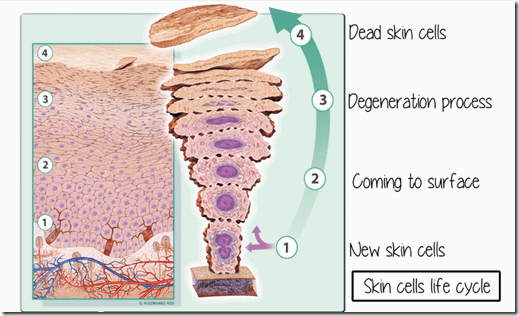
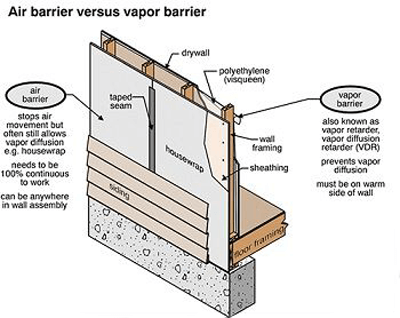
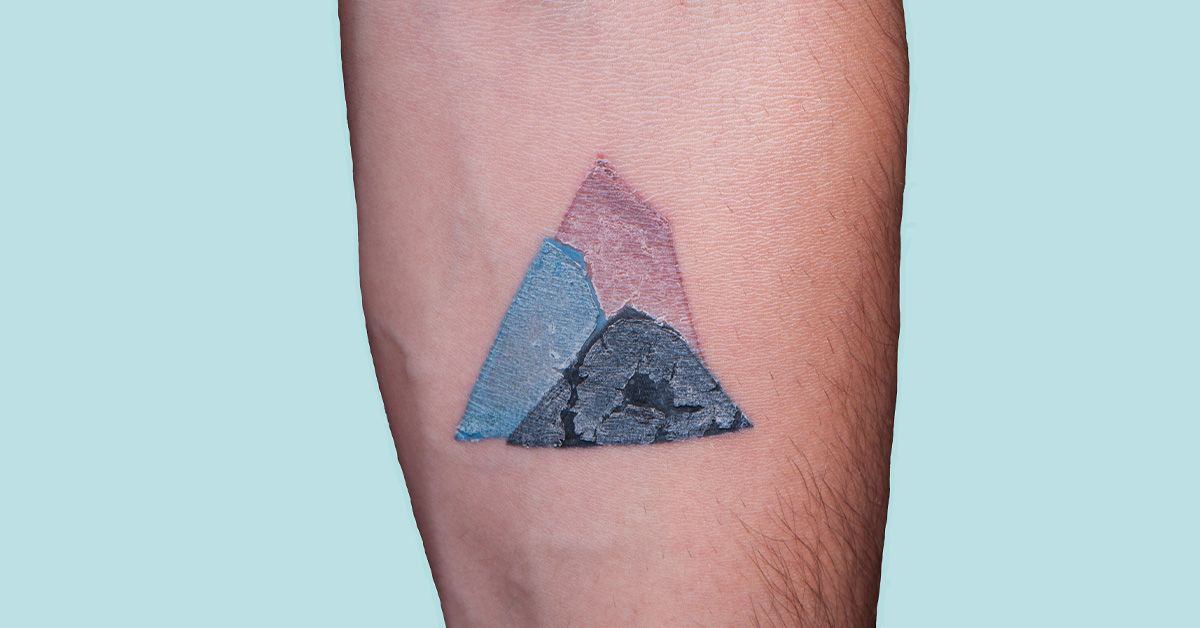




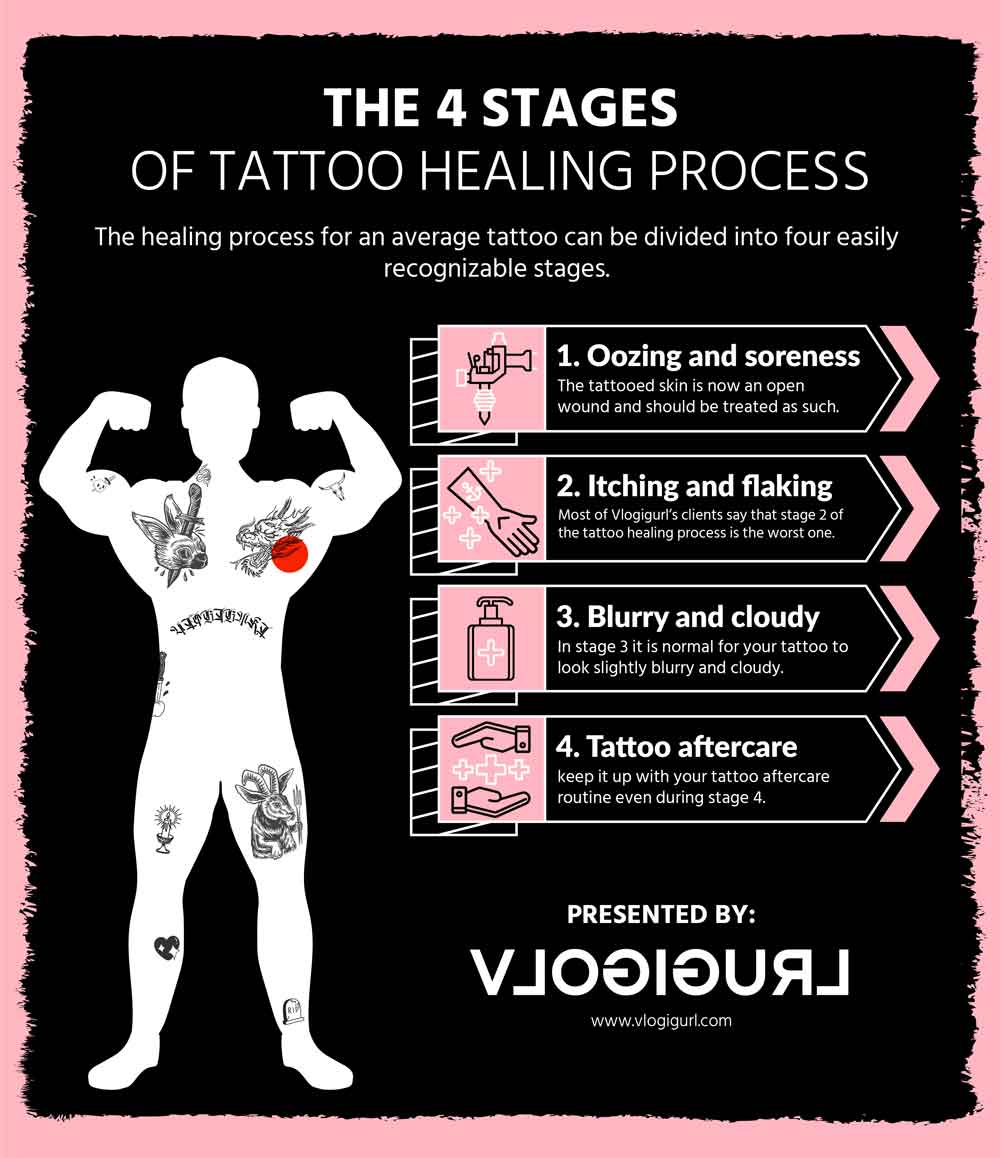
:max_bytes(150000):strip_icc()/byrdie-update-tattoo-lotion-tout-891e351ef64549bf812a0cd75aff1819.jpg)

